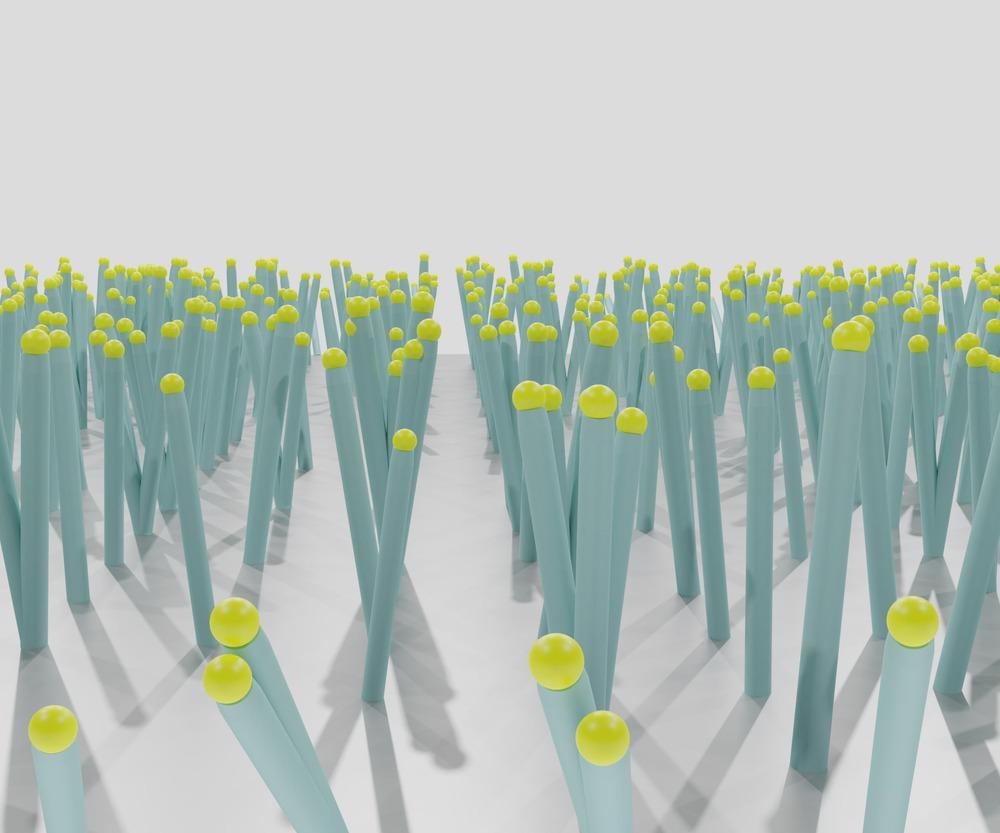A paper available as a pre-proof in the Journal of Alloys and Compounds demonstrates an innovative strategy to enhance the giant magnetoresistance (GMR) effect of cobalt/copper (Co/Cu) multilayered nanowire arrays (MNAs).

Study: A novel strategy to improve giant magnetoresistance effect of Co/Cu multilayered nanowires arrays. Image Credit: Love Employee/Shutterstock.com
GMR Effect in MNAs
GMR is referred to as a phenomenon that occurs when the electrical resistance in a multi-layered structure with alternating non-magnetic and ferromagnetic layers changes rapidly due to the action of an external magnetic field. GMR effect has gained significant attention owing to its application in electronic devices and magnetic sensors.
MNAs provide high magnetoresistance compared to multi-layered films. Thus, these arrays can be integrated into sensing and recording applications. Additionally, MNAs grown on anodic aluminum oxide (AAO) templates by the electrodeposition method display greater structural integrity and environmental stability. The properties and structures of these MNAs can be controlled by changing the deposition conditions and geometry of the AAO template.
Recently, new procedures were developed to grow gradient diameter MNAs (GDMNAs) with exciting properties. GDMNAs demonstrate both high anisotropy of small diameter MNAs and soft magnetic properties of large diameter MNAs. High anisotropy provides thermal stability, while soft magnetic properties lead to a small switching field. Thus, multilayer GDMNAs can potentially provide thermal stability and improve GMR behavior.
In this study, researchers synthesized Co/Cu uniform diameter MNAs and GDMNAs using AAO templates with diameters between 29 nanometers for the thin end and 103 nanometers for the thick end, characterized the synthesized samples, and measured their GMR value.
Synthesis of Co/Cu MNAs as a New Strategy to Improve the GMR Effect of MNAs
Reagents of copper (II) sulfate pentahydrate (CuSO4·5H2O), sodium hydroxide (NaOH), potassium chloride (KCl), sulfuric acid (H2SO4), boric acid (H3BO3), cobalt (II) sulfate heptahydrate (CoSO4·7H2O), and deionized water were used as the starting materials. AAO templates were used for the electrodeposition of Co/Cu MNAs.
A Cu layer sputtered on the AAO template surface with smaller pore diameters served as the working electrode before deposition. Three Co/Cu MNAs with uniform diameters of 100 nanometers (UDMNAs-100), 60 nanometers (UDMNAs-60), and 30 nanometers (UDMNAs-30), and a Co/Cu GDMNAs with a diameter between 30 nanometers and 98 nanometers were synthesized through a three-electrode system.
The electrolyte contained H3BO3, CuSO4·5H2O, and CoSO4·7H2O, and H2SO4 was used to adjust its pH to 3.5. In a constantly agitated environment, the electrodeposition potential for Cu and Co deposition were -0.5 volts for 30 seconds and -1.2 volts for 10 seconds, respectively, and the total deposition time was 6000 seconds.
Characterization and Evaluation of the Synthesized Samples
Transmission electron microscopy (TEM) and TEM with energy-dispersive X-ray analysis (EDX) were used for the characterization of MNAs. A scanning electron microscope (SEM) was employed for morphological characterization of gradient diameter AAO template and GDMNAs.
The magnetoresistance hysteresis loops and hysteresis loops were determined using a physical property measurement system and vibrating sample magnetometer, respectively.
Research Findings
Co/Cu MNAs with uniform diameters of 30 nanometers, 60 nanometers, and 100 nanometers and a gradient diameter were synthesized successfully. The average diameters (d) of small pores and large pores on the surface of the gradient diameter AAO template were 31.4±6.7 nanometers and 98.3±6.3 nanometers, with the corresponding pore separation (s) of 45.1±5.3 nanometers and 22.3±3.5 nanometers, respectively. The d of the other uniform diameter AAO templates were 100, 60, and 30 nanometers, respectively.
The diameter of the thin end and the thick end of GDMNAs was 28.7 nanometers and 103.2 nanometers, respectively, which is almost similar to the pore sizes of the AAO template with gradient diameter. A periodic layered structure was observed in GDMNAs, where the Co element was periodically distributed in magnetic layers, while the Cu element was distributed throughout the nanowire.
The average thickness of the Co layer and Cu layer was 32 nanometers and 15 nanometers, respectively. The other three UDMNAs demonstrated a similar multilayered structure and Cu/Co layer thickness.
The UDMNAs-30 displayed a larger coercivity of 2200 oersted compared to the 570 oersted and 283 oersted of UDMNAs-60 and UDMNAs-100, respectively, due to the single-domain structure of nanowires with a small radius. The coercivity of the nanowire increased with the decreasing diameter as the magnetic domain structure shifted from a multi-domain to a single domain structure. The coercivity of GDMNAs was 1729 oersted irrespective of their diameter, which was similar to the coercivity of UDMNAs-30 diameter.
The remanence decreased sharply with rising diameter owing to improved dipolar interaction, and the remanence ratio of UDMNAs-30 and GDMNAs was almost similar, regardless of the diameter of nanowires. Thus, UDMNAs-30 displayed a larger anisotropy and coercivity and there was a robust coupling between thick and thin ends within every nanowire.
Every Co/Cu MNA demonstrated a GMR effect owing to the magnetization alignment by the field, with UDMNAs-30 and GDMNAs displaying the lowest and highest GMR value at 8% and 27%, respectively. The GMR value increased in better-multilayered structures in large diameter nanowires owing to their high remanence and coercivity. High coercivity ensures good stability of the spin valve structure, which improves the GMR effect. The irreversible components of GDMNAs, UDMNAs-100, UDMNAs-60, and UDMNAs-30 were 86%, 76%, 80%, and 100%. GDMNAs showed a similar behavior as UDMNAs-30.
Taken together, the findings of this study demonstrated that the synthesized GDMNAs possess the highest GMR value for Co/Cu MNAs. The thick segment of GDMNAs provides superior multilayered structures, while the thin segment determines the magnetic properties of the thick segment.
Reference
Xu, H., Xu, J., Hu, J. et al. (2022) A novel strategy to improve giant magnetoresistance effect of Co/Cu multilayered nanowires arrays. Journal of Alloys and Compounds. https://www.sciencedirect.com/science/article/pii/S0925838822011203?via%3Dihub.
Disclaimer: The views expressed here are those of the author expressed in their private capacity and do not necessarily represent the views of AZoM.com Limited T/A AZoNetwork the owner and operator of this website. This disclaimer forms part of the Terms and conditions of use of this website.